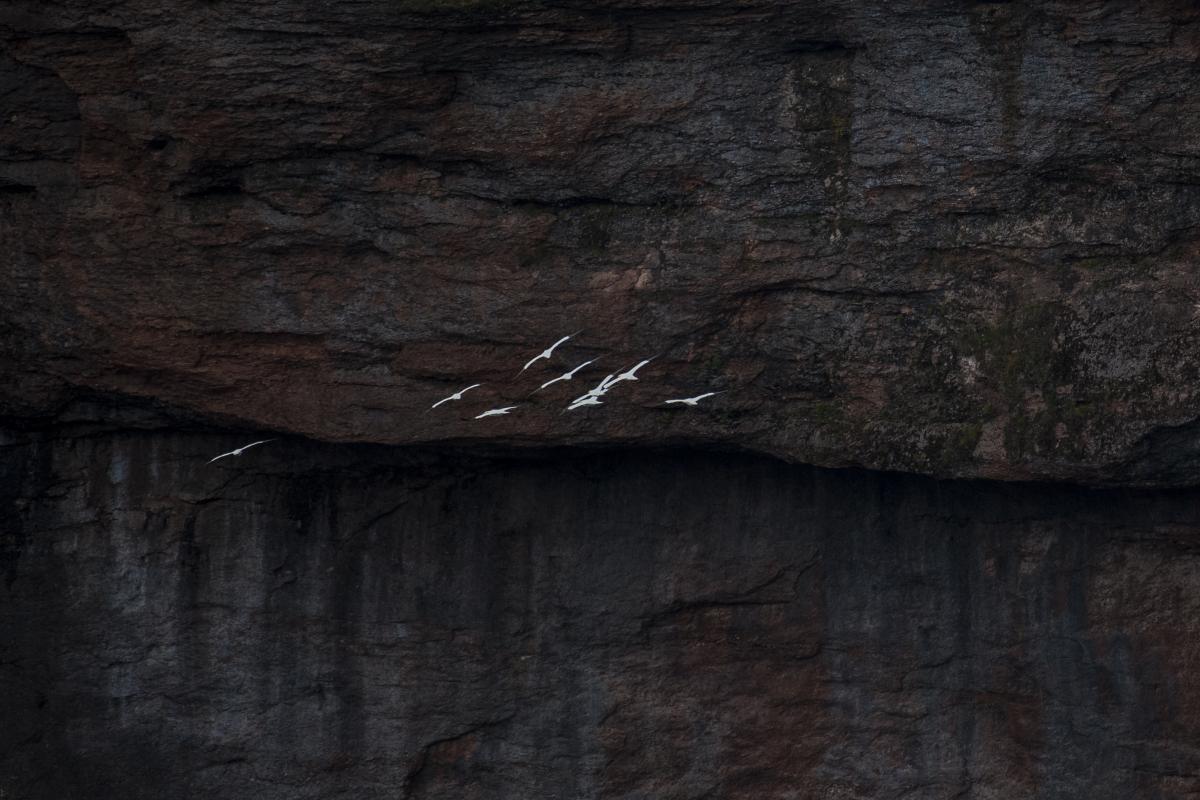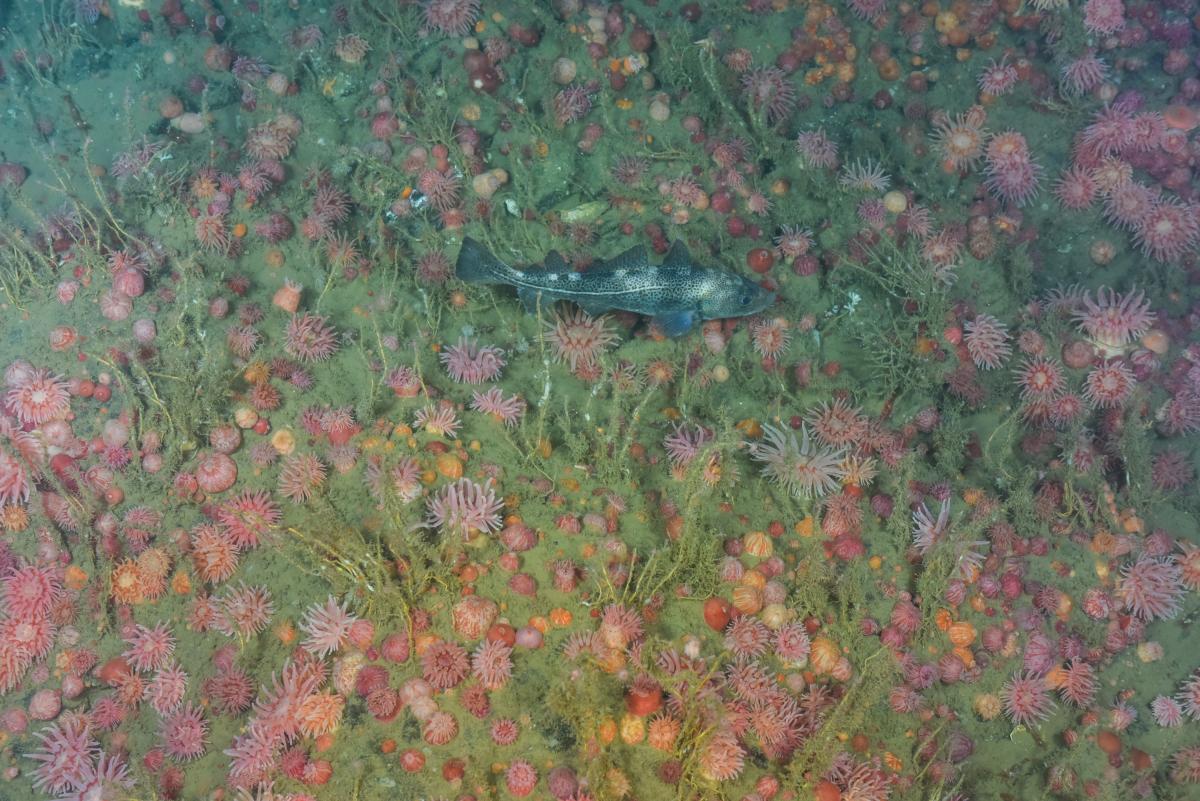March 14, 2019
MPA networks: How to effectively protect an entire ecosystem
Estimated reading time: 0 minutes
BY: Sarah Cameron
Topics: Protect Marine Habitat
The ocean covers more than 70 per cent of Earth’s surface, but less than 10 per cent of it has been explored. What we do know is that the ocean connects all life on Earth – in and out of the water. The marine world is complex. It is made up of ecosystems that are a combination of dynamic interactions between plants, animals, microorganisms and their environment. From seamounts and deep trenches to kelp forests and coral reefs, the ocean provides us with unparalleled goods and services, such as regulating our climate, providing jobs and food security and influencing our cultures and identities.
With the ocean so integral to our way of life, it is imperative that we protect it from the growing pressures that threaten its health. As Sylvia Earle has famously said, “No water, no life. No blue, no green.” Together, we can protect the ocean with strong marine conservation policies. Habitat protection through the use of marine protected area (MPA) networks is one of the tools we can use.

What’s an MPA Network?
Marine protected areas are like Canada’s national parks – but for the oceans. They are a conservation measure designed to protect important and sensitive marine habitat and species. Research has shown that small, disconnected MPAs with different priorities and management strategies tend to be ineffective. The ocean doesn’t come with borders or fences, so small MPAs may not be able to support species that are migratory or have large, widely distributed populations. Marine species – from krill to killer whales – move throughout the ocean and are dependent upon the health of the entire ecosystem.
By protecting the ocean and the species within it in ways that prioritize interconnectivity we can conserve not only marine life, but the entire ecosystem. When several MPAs are ecologically connected they are called MPA networks – essentially scaling up single MPAs to work together and managing them with a holistic, ecosystem-based approach.
Networks view individual MPAs as just small pieces of the whole puzzle. They recognize the interconnection of ocean processes and species, ensuring the puzzle pieces work together to build redundancy into the network and to keep species protected as they move throughout their life cycles. This type of protection makes the ecosystem more resilient to the impacts of threats such as climate change or disasters, such as oil spills.
This approach to marine protection is the international standard, and we know that it works. For example, in California, since implementing the Channel Islands MPA Network, scientists have observed an increase in the abundance and size of species found within the MPAs versus the surrounding waters. According to the International Union for Conservation of Nature (IUCN), “When effective, MPA networks can magnify benefits of individual sites, protect large-scale processes, slow the loss of endangered marine species and restore depleted fisheries.”

Getting a network for the Gulf of St. Lawrence
Canada has made international commitments to protect 10 per cent of our oceans by 2020, and we are on track to achieve this target. With an estimated 8 per cent of our oceans protected today – compared to less than 1 per cent in 2015 – Canada has made leaps and bounds designating MPAs to protect valuable marine species and habitats. Fisheries and Oceans Canada (DFO) has also committed to creating five priority MPA networks, in all three oceans, to further protect our ocean ecosystems and surrounding coastal communities.
The Gulf of St. Lawrence (GoSL) is one of the five priority bioregions where DFO has committed to implementing an MPA Network Plan. This area is one of the largest and most productive estuaries in the world and it is home to beluga whales, cold-water corals, puffins, cod, porbeagle sharks, and sea turtles, along with many other species. Half of Canada’s provinces border the Gulf; its ocean real estate supports the livelihoods of approximately 52,000 people, contributing $2.7 billion to the economies of the adjacent provinces. What this MPA Network plan looks like and how it will be implemented is still under development and will be determined by the government and through consultation processes with First Nations, stakeholders, and conservation organizations. Oceana Canada will continue to advocate for strong protection measures throughout this process.
The GoSL is facing pressure from both human activities and climate change. The 17 marine refuges and MPAs that currently exist in the GoSL are all fairly small, have a variety of conservation objectives, and are disconnected from a management perspective – all of which make them vulnerable to climate change and human-caused threats, including environmentally-damaging industrial activities.
For example, there are threats to the 11 Coral and Sponge Conservation Areas in the Gulf because oil and gas activities are not explicitly prohibited in these areas. Elsewhere in Atlantic Canada, other marine refuges are threatened by calls for offshore oil drilling and exploration, activities that directly conflict with the conservation objectives of marine protection.
The upcoming Gulf MPA Network plan has the potential to shift the scale and focus of habitat protection from individual MPAs and marine refuges to the entire Gulf of St Lawrence ecosystem. We are calling on Fisheries and Oceans Canada to release the Gulf of St. Lawrence MPA Network Plan in a timely, collaborative and meaningful manner in order to protect habitats, rebuild fisheries and support coastal communities. Join us as we campaign to protect marine habitats.


